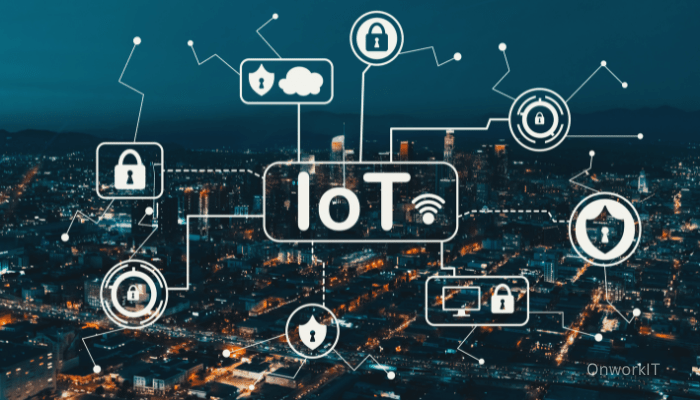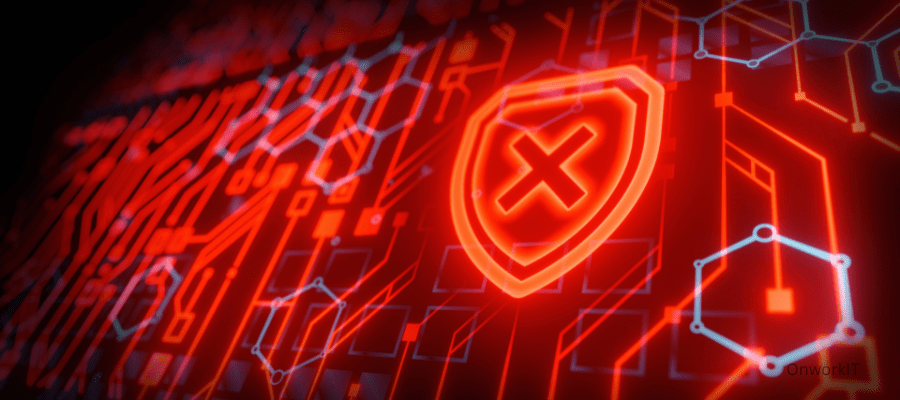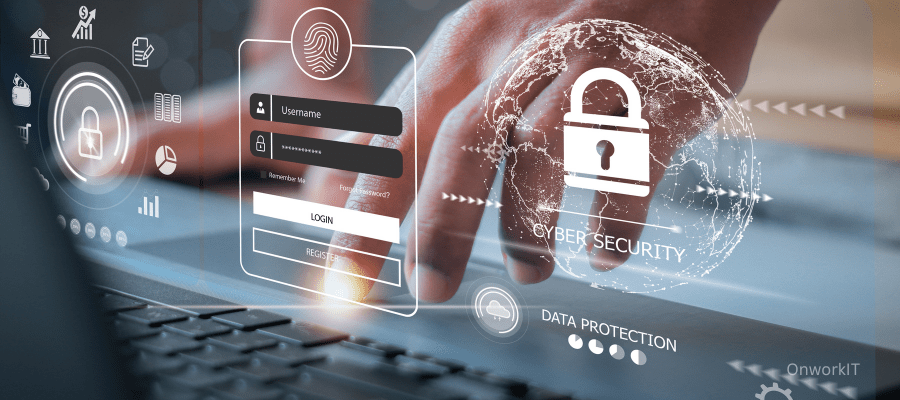Cybersecurity Trends is a technology that protects computers, servers, mobile devices, electronic systems, networks, and data from malicious attacks. It is also referred to as information Technology security or electronic information security. This term applies to various environments ranging from business to mobile computing and can be divided into several common categories.
1. Increasing Focus on AI and Machine Learning in Cybersecurity
By 2024, artificial intelligence (AI) and machine learning (ML) will play crucial roles in cybersecurity. Advanced AI data analytics are increasingly used to identify and predict cyber threats, enhancing early detection systems. Machine learning algorithms are continuously evolving to improve defense measures against new threats. AI algorithms are expected to provide real-time threat analysis by 2024, enabling faster and more accurate responses to cyber incidents. Machine learning may automate adjustments and updates to cybersecurity protocols, reducing reliance on manual updates.
We will also witness the emergence of AI-driven security robots programmed to autonomously identify and counter cyber threats. These developments signify a shift towards smarter and more proactive cybersecurity systems driven by advances in AI and machine learning.
2. Growing Importance of IoT Security
As we approach 2024, the Internet of Things (IoT) will continue its exponential growth, with interconnected devices expanding. However, this growth also brings numerous security challenges. The diversity and ubiquity of IoT devices make them attractive targets for cyberattacks, potentially leading to widespread vulnerabilities.

A key goal for 2024 will be enhancing IoT security through standardized protocols. Progress is expected in implementing universal encryption standards and mandatory security certifications for new devices. Integration of Artificial Intelligence and machine learning with IoT systems will monitor abnormal patterns to quickly respond to threats.
Additionally, there will be increased focus on educating users about IoT security, enhancing overall network security as awareness of risks and best practices grows. Blockchain technology will be widely applied to decentralize IoT networks, protecting them from attacks aimed at centralized systems. These advancements aim to create a safer and more resilient IoT ecosystem in 2024.
3. Remote Work and Its Broadening Impact on Cybersecurity
The growth of remote work will continue to reshape industries in 2024, demanding heightened attention to cybersecurity, especially in securing remote access environments. Splashtop plays a crucial role here by offering robust remote access solutions that meet evolving security needs in diverse work settings.
Splashtop solutions ensure secure and seamless access to organizational resources, overcoming geographical limitations. Key advantages include strong encryption and advanced identity verification methods, crucial for preventing unauthorized access and cyber threats prevalent in remote work environments.
Furthermore, Splashtop supports secure connections across different networks while maintaining high performance and usability, essential for businesses adapting to remote work. As we enter 2024, solutions like Splashtop will become increasingly vital in fortifying remote work cybersecurity frameworks, highlighting their significance in the digital era.
4. Rise of Quantum Computing and Its Impact on Cybersecurity

Quantum computing will be a rapidly developing field in 2024, fundamentally changing how we approach data processing and problem-solving. Unlike traditional computers that use binary digits (0s and 1s), quantum computing uses quantum bits (qubits), which can exist in multiple states simultaneously due to quantum superposition. This enables quantum computers to process large amounts of data at unprecedented speeds, solving complex problems faster than classical computers.
In cybersecurity, quantum computing presents both opportunities and challenges. It can strengthen encryption methods and develop more sophisticated algorithms for detecting and managing large-scale security data operations. However, it also poses significant threats to current cybersecurity protocols by potentially compromising traditional encryption methods like RSA and ECC. Addressing these vulnerabilities requires urgent research into quantum-resistant encryption technologies, known as post-quantum cryptography.
As we approach 2024, cybersecurity will undergo rapid development to leverage the advantages of quantum computing while mitigating associated risks. Measures may include upgrading encryption methods and enhancing systems with advanced features capable of defending against quantum technologies effectively.
5. Evolving Phishing Attacks
Phishing attacks have long posed a threat to cybersecurity, and by 2024, their complexity and effectiveness will continue to grow. Modern phishing attacks use targeted strategies and advanced technology to deceive users, often bypassing traditional security measures. In response to these sophisticated threats, robust identity authentication systems are crucial for enhancing security.

Solutions like Foxpass play a critical role here by implementing strong Multi-Factor Authentication (MFA) systems. MFA requires users to provide at least two authentication factors to access resources, increasing the difficulty for attackers attempting unauthorized access, even if they successfully trick users into disclosing credentials. Foxpass also manages access permissions, ensuring users have the minimum access needed to perform tasks, which reduces potential damage from credential leaks. Integrated with existing systems, Foxpass provides detailed access logs, adding an extra layer of security. By monitoring access patterns, Foxpass helps detect anomalies related to vulnerabilities exploited by phishing attacks. Integration with advanced authentication solutions like Foxpass becomes increasingly important in protecting systems and data as phishing techniques evolve.
6. Enhanced Focus on Mobile Security
In 2024, mobile devices will be indispensable for personal and work life, leading to increasing concerns about mobile security. Dependence on mobile devices for remote work, financial transactions, and personal communication makes them attractive targets for cyberattacks. This underscores the need for robust mobile security solutions.
To meet growing demands for mobile security, Splashtop offers various secure mobile access solutions. Splashtop platforms ensure secure remote access from mobile devices to computers or networks. Key features include strong encryption protocols to protect data during transmission between devices, preventing unauthorized interception or access. Splashtop’s mobile solutions also feature Multi-Factor Authentication and session logging to further enhance security. These features are crucial for preventing unauthorized access and monitoring suspicious activities during remote sessions.
Splashtop emphasizes user-friendly interfaces to ensure security without compromising convenience. Users can securely access work content or personal environments from mobile devices without complex security procedures. As mobile device usage continues to rise, solutions like Splashtop play an increasingly vital role in providing secure mobile access. Their combination of advanced security and usability will be key in addressing mobile security challenges in 2024.
7. Zero Trust Security
The Zero Trust security concept gained significant momentum in 2023, evolving from a niche strategy to a critical element of cybersecurity strategies. Zero Trust operates on the principle of “never trust, always verify”. Unlike traditional security models focused on perimeter defense, Zero Trust assumes threats exist both outside and inside the network.
In Zero Trust, all access requests, regardless of their source or network location, are treated as potential threats. This requires strict identity verification, access control, and continuous monitoring of network activities. Implementing Zero Trust requires a comprehensive approach covering all aspects of cybersecurity, including user authentication, endpoint security, and least privilege access.

One of the main advantages of Zero Trust is its ability to effectively mitigate risks from insider threats and lateral movement within networks. With increasing adoption of cloud services and remote work, Zero Trust security becomes even more critical, offering a flexible and adaptive approach to protect diverse distributed IT environments.
Transitioning to a Zero Trust framework in 2024 represents a shift in cybersecurity paradigms, focusing on continuous verification and minimizing vulnerabilities to enhance overall network security.
8. Cybersecurity Skills Gap and Education
In 2024, the cybersecurity field will continue to face a significant skills gap challenge. As the complexity of cyber threats increases, the demand for skilled cybersecurity professionals grows rapidly. However, there is a noticeable shortage of talent with the skills and knowledge required to effectively respond to these evolving threats. The cybersecurity skills gap poses risks not only to individual organizations but also challenges global network infrastructure.
To address this issue, various initiatives have been taken. Educational institutions are expanding cybersecurity courses, offering students professional degrees and certifications aimed at equipping them with the latest knowledge and skills in network defense. These courses increasingly emphasize practical training to prepare students to effectively tackle real-world challenges in cybersecurity.
Additionally, professional development and continuous learning are becoming essential parts of cybersecurity careers. Organizations and industry bodies offer various training programs, workshops, and seminars to help current professionals stay updated on the latest cybersecurity trends, tools, and technologies. Customized training programs typically cover specific aspects of cybersecurity such as network security, threat intelligence, or incident response.
Furthermore, cybersecurity education is increasingly focusing on public-private partnerships. Companies collaborate with educational institutions to develop training programs tailored to industry needs. These partnerships benefit students by equipping them with practical skills needed in the workforce, while also benefiting the industry by providing a better-prepared workforce to tackle current and future network challenges. As we approach 2024, these education and training programs play a crucial role in narrowing the cybersecurity skills gap, ultimately strengthening a more resilient digital ecosystem.
9. Blockchain and Cybersecurity
As we approach 2024, blockchain technology is increasingly recognized for significantly enhancing cybersecurity measures. At its core, blockchain is a decentralized ledger technology known for its security features such as immutability, transparency, and tamper resistance. These features make blockchain a powerful choice for protecting digital transactions and data from network threats.

One of the primary ways blockchain enhances cybersecurity is by preventing data tampering. Once data is recorded on a blockchain, it cannot be altered without achieving network consensus, making it nearly impossible for hackers to manipulate data. This feature is beneficial for safeguarding sensitive data like personal identities, financial transactions, and critical infrastructure data. Blockchain is also used to create more secure and decentralized identity management systems. By storing identity data on the blockchain, individuals and organizations can better manage information access, reducing risks of identity theft and fraud.
Looking ahead to 2024, blockchain is expected to play a critical role in protecting IoT devices. Integrating blockchain into IoT networks allows each device to operate as a secure, independent node, making the entire network more resilient against attacks typically exploiting centralized security vulnerabilities. Additionally, blockchain-based smart contracts are poised to see broader applications in automating and securing digital protocols. These self-executing contracts enhance the security of various online transactions, ensuring compliance and reducing risks of violations.
Summary
Blockchain technology is maturing in 2024, expanding its role in cybersecurity by providing innovative solutions to protect digital data, manage identities, and secure IoT networks, thereby strengthening the digital environment against evolving network threats.
10. Cybersecurity Insurance Going Mainstream
In 2024, cybersecurity insurance has become a key component of business risk management strategies. With the increasing complexity and frequency of cyber threats, more organizations are opting for cybersecurity insurance to mitigate financial risks related to data breaches and cyber attacks. However, the cybersecurity posture of organizations significantly impacts the cost of cybersecurity insurance.

Using mature cybersecurity solutions like Splashtop can directly reduce cybersecurity insurance costs. Splashtop’s secure remote access solutions enhance organizational defenses against cyber threats, especially in remote work scenarios. By implementing robust encryption, multi-factor authentication, and comprehensive access logs, Splashtop strengthens security infrastructure and lowers the likelihood of successful cyber attacks. Typically, insurance companies assess risk levels based on an organization’s security measures, making stronger defenses potentially more cost-effective.
Moreover, integrating with solutions like Splashtop demonstrates to insurance providers that the organization is proactively addressing cybersecurity. Taking a proactive stance on cybersecurity indicates lower cybersecurity risks, often leading to favorable evaluations from insurers. Essentially, by investing in reliable cybersecurity solutions, organizations not only enhance security but also reduce cybersecurity insurance costs, reflecting their commitment to robust risk management practices.









